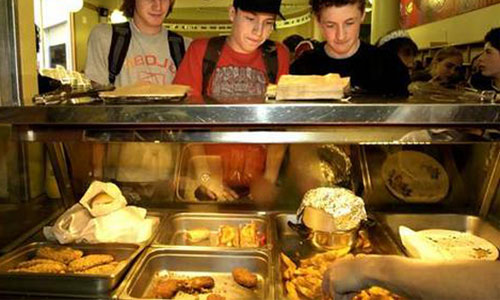Time being tough, it is but obvious to witness financial crunch in a lot of people, especially the young, financially vulnerable group, college students. Therefore, here are some guidelines to help students like you and all others making their living on a budget to eat healthy, palatable food, yet at a much lower cost.
Find out some healthy but cost-effective foods
- Potatoes - Buy these in bulk, a 10 pound bag may come at a price of about $3.49 only. Cook your food at home, put that into a cold lunch bag, use your college microwave to warm it up and if possible, then you can always add water instead of milk, provided you enjoy it.
- Macaroni and cheese - There are some selected discount stores that sell these for about $1.00 for a pack of three. You can purchase a premium quality microwavable bowl to prepare some snacks whenever you feel hungry.
- Apples/pears/oranges - Often, you'd find a 5 pound bag of some of these fruits being sold at dirt cheap rates, say about $2.50 - $2.99.
- Rice - It is always advisable to purchase them in bulk. For instance, you can buy a 20 pound bag for as low as $15.99. Prepare the rice at home and warm it up in college.
- Bananas - Food stuffs like these is considered nature's most generous gift to us. You can keep them too at your home as they are sold for around $0.40 a pound on sale. However, make sure you finish them off soon as bananas have got a very short shelf-life, or else you could buy some fully repined and some half-repined ones to last you that whole week. Munch on them whenever you feel like and you'll never go hungry.
- Chicken - While they are on sale, you could get a couple of 10 pound bag of legs for $4.99-$6.99. Cook your meal at home, pack it in your lunch box and reheat it in your college microwave.
How do you plan your meal?
Meal planning has got the following steps:
1. Look up in your cupboards, freezer or refrigerator to find out the food stuffs that you have and are fit for use.
2. Now, think of ways to put them into good use so that you don't have to grocery shop much during the weekdays and that your food stock will last you throughout the week with ease.
3. However, you may require certain spices or condiments or any other food item to go with the ones that you already have in your freezer in order to cook a proper meal. Make a grocery list of additional food items that you'd require and purchase them while returning from college.
4. Now, skim through the local magazines or newspapers to find out the weekly advertisements offering huge discounts on grocery items at your nearby departmental stores. You can also find a good amount of discounts, offers and coupons online. Mark the ones that suit your need and use them along with your grocery list while shopping.
5. Finally, go through your meal plan of the week to check and see if you are actually including all or most of the food groups in your meals.
How do you create a grocery shopping list?
Having a grocery list will help you to stay focused during shopping and prevent you from impulsive purchases. Here's a guide to create a practical grocery list:
- Since you are already familiar with what you already have, use a meal planning tool to create an effective grocery list.
- Browse through ads, sale offers and coupons.
- Organize your list as this will help you to wrap up your shopping in the shortest time possible and save you time to devote toward your studies. Well you can use a little bit of time for fun as well.
How to go on shopping
Armed with a good list of grocery items you need, here's how to go about shopping at a grocery store:
- Before you step out of your home or hostel, have a snack first and then go for shopping. This is to prevent you from eating outside and waste extra money on junk or unhealthy foods.
- Scour for unit rates. Find out those, as they may provide you with the best possible deals on items that you require.
- Coupons are good but never overdo them or end up buying more than you'd need for the week. Doing so will surely end up in the waste bin and you'll lose a good amount of dollars because of that.
- Take time to read the labels of food products to compare the prices and to check their best before dates.
How to reduce food waste
Before, I start this section, I would like to share this piece of data with you - according to a USDA sponsored survey in 2004, an average American household wastes around 14 percent (almost $600) of their food in a year. So, use your food smartly to avoid losing your hard-earned dollars:
- If you find that you are wasting food more frequently and are not using leftovers, then try making smaller meal portions.
- Make use of transparent storage containers. This will help you to use up the leftover foods before they get spoilt.
- Keep a leftover list in your kitchen so that you know which food has to be used first in order to reduce waste and increase your savings.
- Proper storage is crucial to increase the shelf-life of any food products, especially raw and unprocessed fruits, vegetables, meat and poultry.
When you follow the above discussed money saving tips, then you'd be surprised to see the amount of extra money you are having every month. This you would gain without putting a lot of stress on yourself, without depriving yourself of tasty meals and of course the thrill of the good college days. If there's anything more you want to find out about budgeting and saving, then you could go through OVLG's personal finance educational resources.













